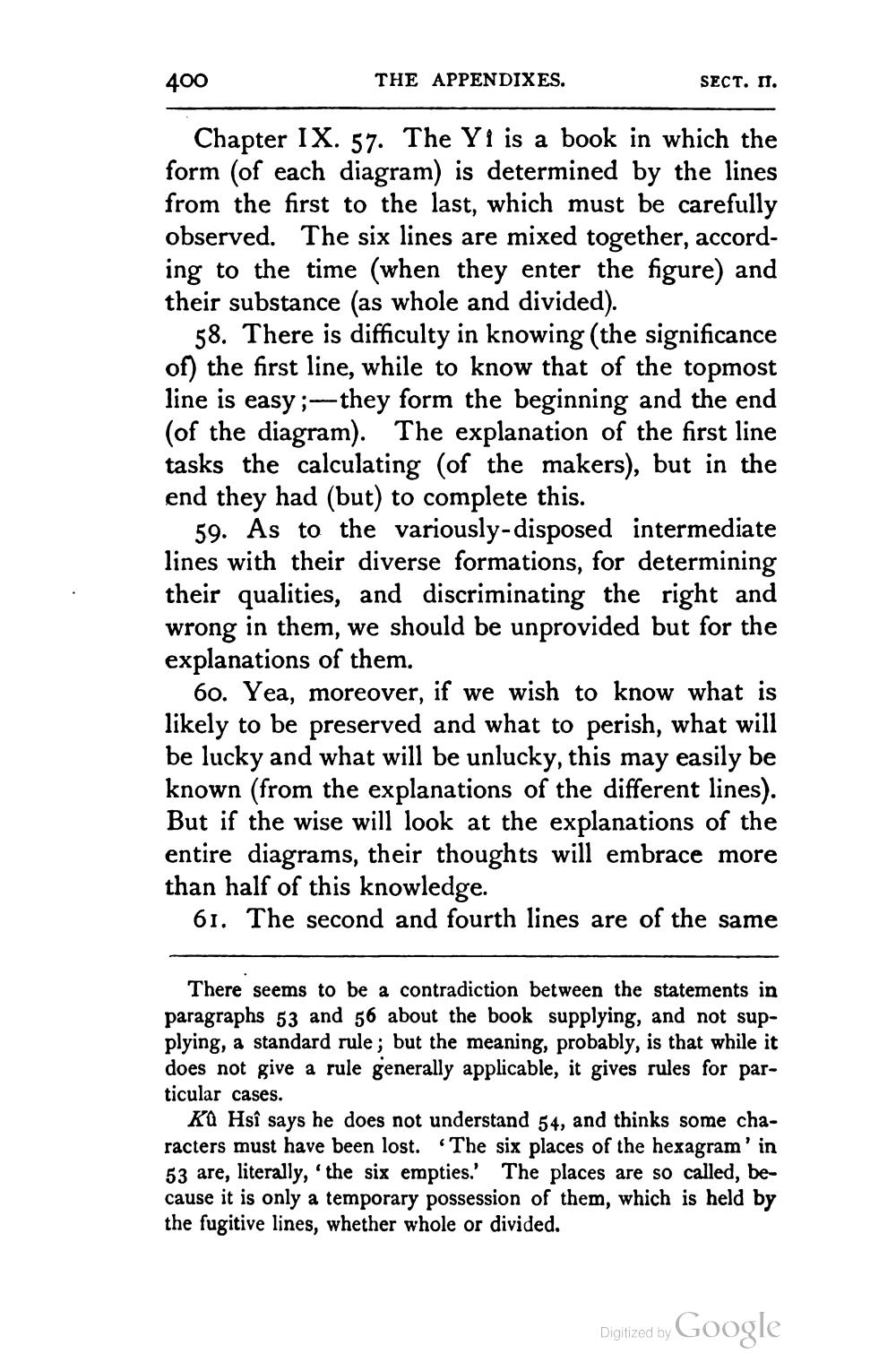________________
400
THE APPENDIXES.
SECT. II.
Chapter IX. 57. The Yi is a book in which the form (of each diagram) is determined by the lines from the first to the last, which must be carefully observed. The six lines are mixed together, according to the time (when they enter the figure) and their substance (as whole and divided).
58. There is difficulty in knowing (the significance of) the first line, while to know that of the topmost line is easy; they form the beginning and the end (of the diagram). The explanation of the first line tasks the calculating (of the makers), but in the end they had (but) to complete this.
59. As to the variously-disposed intermediate lines with their diverse formations, for determining their qualities, and discriminating the right and wrong in them, we should be unprovided but for the explanations of them.
60. Yea, moreover, if we wish to know what is likely to be preserved and what to perish, what will be lucky and what will be unlucky, this may easily be known (from the explanations of the different lines). But if the wise will look at the explanations of the entire diagrams, their thoughts will embrace more than half of this knowledge.
61. The second and fourth lines are of the same
There seems to be a contradiction between the statements in paragraphs 53 and 56 about the book supplying, and not supplying, a standard rule; but the meaning, probably, is that while it does not give a rule generally applicable, it gives rules for particular cases.
Kû Hsî says he does not understand 54, and thinks some characters must have been lost. The six places of the hexagram' in 53 are, literally, 'the six empties.' The places are so called, because it is only a temporary possession of them, which is held by the fugitive lines, whether whole or divided.
Digitized by
Google




